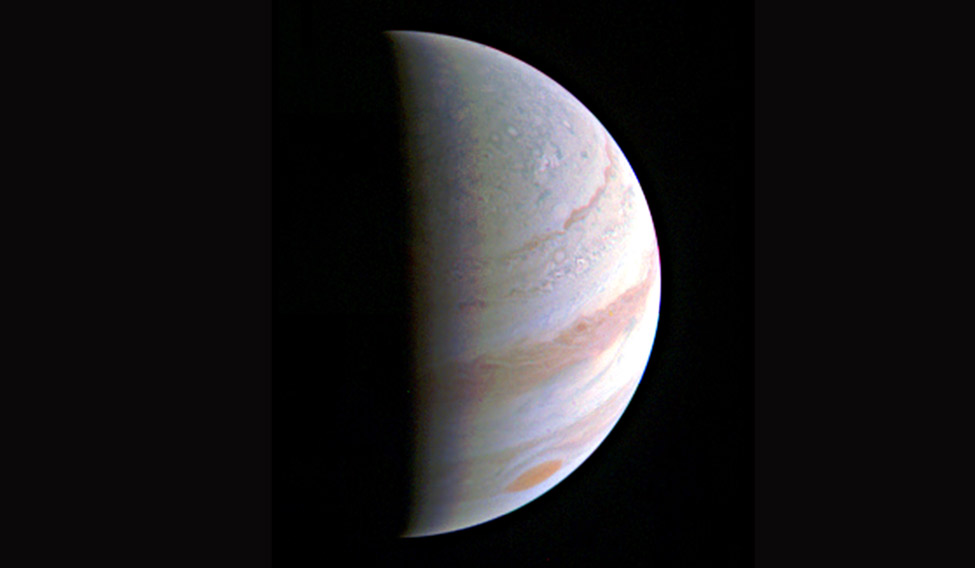A jet stream speeding through the atmosphere high above Jupiter's equator changes its course almost on a schedule due to gravity waves, NASA scientists say.
Similar equatorial jet streams have been identified on Saturn and on Earth, where a rare disruption of the usual wind pattern complicated weather forecasts in early 2016.
Researchers combined modelling of Jupiter's atmosphere with detailed observations made over the course of five years from NASA's Infrared Telescope Facility (IRTF).
The findings could help scientists better understand the dynamic atmosphere of Jupiter and other planets, including those beyond our solar system.
"Jupiter is much bigger than Earth, much farther from the Sun, rotates much faster, and has a very different composition, but it turns out to be an excellent laboratory for understanding this equatorial phenomenon," said Rick Cosentino, a postdoctoral fellow at NASA's Goddard Space Flight Center in the US.
Earth's equatorial jet stream was discovered after observers saw debris from the 1883 eruption of the Krakatoa volcano being carried by a westward wind in the stratosphere.
Later, weather balloons documented an eastward wind in the stratosphere. Scientists eventually determined that these winds reversed course regularly and that both cases were part of the same phenomenon.
The alternating pattern starts in the lower stratosphere and propagates down to the boundary with the troposphere, or lowest layer of the atmosphere.
The eastward phase it is linked to warmer temperatures, and the westward phase is associated with cooler temperatures.
Jupiter's cycle is called the quasi-quadrennial oscillation (QQO) and it lasts about four Earth years.
Researchers have a general understanding of these patterns but are still working out how much various types of atmospheric waves contribute to driving the oscillations and how similar the phenomena are to each other.
Previous studies of Jupiter had identified the QQO by measuring temperatures in the stratosphere to infer wind speed and direction.
The new set of measurements is the first to span one full cycle of the QQO and covers a much larger area of Jupiter.
"These measurements were able to probe thin vertical slices of Jupiter's atmosphere," said Amy Simon, a Goddard scientist who specialises in planetary atmospheres.
"Previous data sets had lower resolution, so the signals were essentially smeared out over a large section of the atmosphere," said Simon.
The team found that the equatorial jet extends quite high into Jupiter's stratosphere.
Since the measurements covered a large region, researchers could eliminate several kinds of atmospheric waves from being major contributors to the QQO, leaving gravity waves as the primary driver.
Their model assumes gravity waves are produced by convection in the lower atmosphere and travel up into the stratosphere, where they force the QQO to change direction.
The results of simulations were an excellent match to the new set of observations, indicating that they correctly identified the mechanism.
On Earth, gravity waves are considered most likely to be responsible for forcing the QBO to change direction, though they don't appear to be strong enough to do the job alone.





